15 Nov
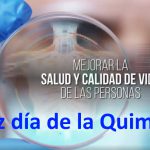
Today, November 15 is a day of celebration for us, the Day of the Chemistry in Spain! Chemistry is the science that studies matter, how it is composed, its properties and how its structures are transformed and, as matter is everything, including living beings and ourselves, we can say that chemistry is omnipresent and transversal in all areas surrounding us. Chemistry is everywhere, we ourselves are chemistry and our health and our life is chemistry. “Everything around us is chemistry in the environment, foods, what we use and what we touch every day. Our own body is a sophisticated complex[...]
25 Jun

The use of protein nanoparticles as biomaterials have been rising in recent years due to their characteristics: high biocompatibility, structural versatility, biodegradability and plasticity of design. We can later incorporate peptide ligands for specific targeting as fusion proteins and use these nanoparticles for targeted nanomedicine. However, not all proteins can be used as scaffolds for targeted drug delivery, as they need to meet certain criteria. First, it is crucial that the proteins used as a scaffold allow site-specific drug conjugation. The stability and proteolysis resistance of these proteins is also important to remain assembled during the bloodstream circulation. In addition,[...]
03 Jun

NANBIOSIS Unit 17 (Confocal Microscopy) is a CIBER-BBN unit located in the Cell Culture Unit, CAI Medicine and Biology, Faculty of Medicine at the University of Alcala. This unit of the ICTS NANBIOSIS supports researchers interested on their different studies visualizing diverse samples as tissues, cells, bacterial biofilms, etc. This unit owns the tools, the know-how and the expertise to accomplish researchers’ goals either by transmission or reflection fluorescent. We are happy of sharing this video in which researchers of Unit 17 show all the steps required for the visualization of the PV-1 molecule, also known as PLVAP, on t[...]
12 May
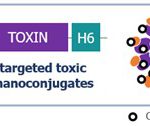
Conventional chemotherapeutics used to fight cancer promote off-target damage in cells and organs that are not affected by the disease. This major drawback may be overcome with the development of tumor-targeted therapies, in which the antitumoral drugs are selectively delivered to tumoral cells using the efficient recognition between a receptor overexpressed in these cells and its ligand, without promoting off-side effects in the rest of the body. The group of Nanobiotechnology (NBT) from the Institut de Biotecnologia i Biomedicina (IBB-UAB), led by Prof. Antonio Villaverde, develops a new concept of pharmaceuticals based on protein nanoparticles, in close collaboration with t[...]
31 Mar

Transmission electron microscope image of SARS-CoV-2 (National Institute of Allergy and Infectious Diseases https://www.niaid.nih.gov) The special volume (No. 55) of the journal Current Opinion in Colloid and Interface Science reviews the implications of colloidal science in the phenomenology of COVID-19, for which the techniques available in NANBIOSIS U12, “Nanostructured liquid characterization unit” , are relevant. Two articles to highlight in this special volume: Airborne transmission of the virus through droplets, and the effect of evaporation and sedimentation. Airborne transmission is determined by the settling time, that is, the time it takes for droplets to be in the air before settling.[...]
28 Feb
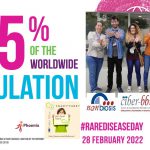
WHY DO CELEBRATE TODAY THE INTERNATIONAL #RareDiseaseDay? 29 of February is a ‘rare’ date and February, a month with a ‘rare’ number of days, has become a month to raise awareness about rare diseases and their impact on patients’ lives. Since 2008 thousands of events happen every year all around the world and around the last day of February with the aim of improving equity and reducing stigmatization for people who live with more than 6,000 rare diseases. WHAT ARE RARE DISEASES Rare diseases are pathologies or disorders that affect a small part of the population (less than 5 per 10,000 inhabitants) and[...]
10 Jan
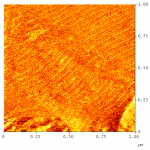
At the end of the XXth century Nanotechnology appeared as one of the more powerful technologies for the future. At that time material sciences were able to produce nanomaterials with exquisite size control and atomic force, microscopy was able to visualize objects in the nanoscale and photolithography arrived to their physical limits in the preparation of computer chips threatening Moore’s law. This empirical law saying that as transistor components shrank, the number per chip doubled about every 18 months, was acting from 1971 (Intel’s first chip) to billions in the present times. At these times, one crucial development was t[...]
21 Dec
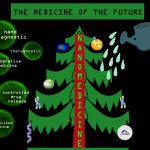
The medicine of the future is an increasingly tackled topic. In the context of global concern for the sustainability of the health system (chronic diseases, new disorders, aging population and financing problems), nanomedicine could promote more affordable and personalized health care and improve the quality of life of the patients. Between innovative techniques already implemented and concepts that evoke science fiction (nanobots, fluorescent particles working as spies, tiny Trojan horses introduced into our body …), nanomedicine generates great expectations. Nanomedicine, what is it exactly? Nanomedicine is the application of nanotechnology to medicine, that is, the use of nanotechnologic systems for[...]
16 Sep
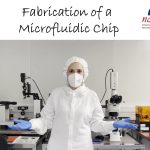
The development of microfluidic devices is very significant for in-vitro diagnostic devices, biomarkers and organ-on-a-chip applications. The techniques, the materials and the equipment used for the fabrication of these devices, are as important as the strategy followed to obtain them. And at the Nanotechnology unit of NANBIOSIS U7– (MicrofabSpace and Microscopy Characterization Facilities of IBEC), we own the tools, the know-how and the expertise to accomplish such a goal. We regularly guide the process of design, in collaboration with the final user, we customize the technology needed to get the product and complete the fabrication of the microfluidic device, drawing[...]
07 Feb
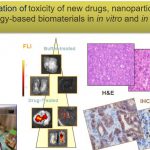
The Nanotoxicology Unit of CIBER-BBN ICTS NANBIOSIS, leaded by Ramon Mangues at the Research Institute of the Hospital de Sant Pau is devoted to evaluate effectiveness and toxicity of novel nanoparticles. This Unit advises clients on the need to study simultaneously anticancer activity and associated toxicity. Thus, preclinical evaluation of novel Nanomedicines is usually carried out performing studies that assess their therapeutic effect, separated from additional experiments devoted to evaluate the toxicity associated with treatment. The dosage used to assess the therapeutic effect, often, significantly differs from the one used to study toxicity, since one is aiming to know t[...]
18 Dec
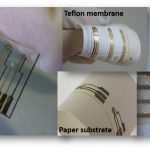
In today’s society there is a great interest in developing new technologies that allow low-cost mass manufacturing, also called “rapid prototyping” or “additive manufacturing”. Rapid prototyping includes technologies such as sterolithography, 3D printing, laser sintering or printed electronics, among others. All of these share digital design and manufacturing from the consecutive addition of layers, that is, techniques that allow creating almost any shape or geometric feature in a very fast time.Printed electronics consists of printing inks on different types of substrates such as textiles, plastics, papers or films to make them “smart”. This technique is presented as an alternative to[...]
26 Feb
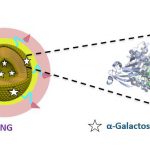
The Fabry disease (FD) is a lysosomal storage disorder (LSD) that currently lacks an effective treatment. Lysosomes are spherical vesicles, which contain hydrolytic enzymes found in nearly all animal cells. LSDs are caused by lysosomal dysfunctions, usually because of the deficiency of a single enzyme required for the metabolism of macromolecules such as lipids, glycoproteins and mucopolysaccharides. Fabry disease is a progressive, X-linked inherited disorder caused by deficiency or absence of the α-galactosidase A (GLA) activity, an enzyme involved in the glycosphingolipid metabolism. The substrates of GLA are glycosphingolipids, being the primary substrate the globotriaosylceramide (Gb3). Therefore, the failure of GLA activity leads[...]
14 Nov
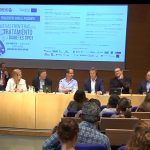
Today in the World Diabetes Day it is a good moment to remember The Patient Panel of the European project DRIVE- Diabetes Reversing Implants, held in Vitoria (Alava) on June 2 where researches and doctors met with patients and families. The Panel was organized by the NanoBioCel group of CIBER BBN and NANBIOSIS Unit 10 Drug Formulation, with the purpose of letting know the DRIVE project to patients and concect patients with the project scientists and experts in pancreas and stem cell transplantation. Thus, one of the most important health objectives of the European Union was met: to promote direct[...]
19 Jul

The experimental study of the mechanical properties of biological tissues is of vital importance. Thorough research into themechanical response of biomaterials is the basis for the creation ofmodels which can accurately reproduce the mechanical behavior ofsuch materials. Adequate mechanical characterization of tissue materials is of paramount interest to the clinical simulations, diagnostic and tissue engineering fields – where the tissue structure, in contrast to classical mechanics application fields, is just simply a biological tissue. In order to obtain their material properties, classical engineering testing techniques have been applied to biologicalmaterials. To reproduce the mechanical behavior of these kinds ofmaterial, many[...]
16 Jan
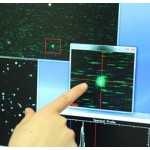
The quick development of nanotechnology and its application in medicine have generated new alternatives for the diagnosis and treatment of diseases thanks to the novel methods of preparation, modification and characterization of nanomaterials. The knowledge about the behavior of matter at the atomic and molecular level has allowed the creation of tools and processes to observe manipulate and control biological structures on a scale between 100 and 10,000 times smaller than a mammalian cell. Nanomedicine is defined as the application of nanotechnology in view of making a medical diagnosis or treating or preventing diseases. It exploits the improved and often[...]
20 Jan
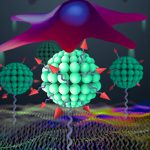
Researchers of three groups of CIBER-BBN at CSIC and IBEC, have created a versatile platform based on hierarchically nanostructured RGD peptide using quatsomes, with proved enhanced cell adhesion. These findings, which arose within the framework of the intramural project of CIBER-BBN “Molecular Biointerfaces for cell guidance” (DynaMo4Vasc), open new possibilities for tissue engineering. The participation of two NANBIOSIS units were acknowledged in the publication of the research results: the synthesis of RGD derivatives were performed at NANBIOSIS U3 “Synthesis of peptides unit” of CIBER-BBN at IQAC−CSIC. And the design and characterization of quatsomes were done at U6 of NANBIOSIS “Biomateria[...]
18 Jan
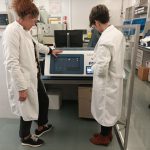
The ICTS NANBIOSIS has expanded its capabilities with the installation and commissioning of a new equipment Time-Lapse Incubator in the CCMIJU’s Assisted Reproduction Lab. The acquisition of the Time-Lapse Incubator is part of the project “Embryonic Genetics in Assisted Reproduction” (GENERA), co-funded by the European Regional Development Fund (ERDF) within the framework of Spain’s Plurirregional Operational Program for Singular Scientific and Technical Infrastructures (ICTS) 2014 -2020 and by Consejería de Economía, Ciencia y Agenda Cultural of Junta de Extremadura. The objective of GENERA includes the purchase of lab equipment to expand services in the field of embryonic genetics as w[...]
16 Jan
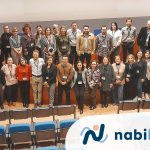
The Horizon Europe project NABIHEAL, coordinated by the Center for Biomedical Research Network (CIBER) at the Institute of Materials Science of Barcelona (ICMAB-CSIC), was launched on 11-12 January 2023 in Barcelona with the first meeting of the international consortium, formed by 14 partners from 7 countries, including research centers, universities, and private companies. This project will apply one the “Cutting Edge Biomedical Solutions” of NANBIOSIS for the preparation of different nanoestructures with antimicrobial properties, required for the development of the final multifunctional wound healing biomaterials. This case will gather the expertise of two NANBIOSIS unit: NANBIOSIS U6 will produce and[...]
24 Nov
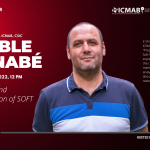
Amable Bernabé, Tecnical Coordinator of NANBIOSIS U6: Biomaterial Processing and Nanostructuring Unit of CIBER-BBN and ICMAB-CSIC is giving a seminar on Preparation and Characterization of SOFT Materials. The seminar will tame place on Monday, 28 November 2020, at 12 PM at ICMAB in the Carles Miravitlles Seminar Hall, ” I will make a brief explanation about the equipment for the characterisation of particulate materials, type of samples that can be analysed, reports, etc… I will also talk about the equipment for processing materials with C” -explains Amable Bernabé. Amable Bernabé joined the ICMAB-CSIC in 2004 as a research assistant working[...]
23 Nov
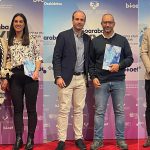
Researchers of NANBIOSIS U10 “Drug Formulation” – NanoBiocel research group from CIBER-BBN and UPV/EHU receives 3 awards in the category of Best International Articles at the annual Bioaraba Research and Innovation Conference. On 4 November, the Bioaraba Health Research Institute held its XXIII Research and Innovation Conference in Vitoria. This important annual forum held in the city brings together professionals from the health system of Alava, the Rioja region of Alava, the Mental Health Network of Alava, the University of the Basque Country and also professionals from companies in R&D&I in health. On this occasion, the NanoBioCel research group of[...]
15 Nov

Today, November 15 is a day of celebration for us, the Day of the Chemistry in Spain! Chemistry is the science that studies matter, how it is composed, its properties and how its structures are transformed and, as matter is everything, including living beings and ourselves, we can say that chemistry is omnipresent and transversal in all areas surrounding us. Chemistry is everywhere, we ourselves are chemistry and our health and our life is chemistry. “Everything around us is chemistry in the environment, foods, what we use and what we touch every day. Our own body is a sophisticated complex[...]
14 Nov

Today, the MATERPLAT 2022 General Assembly has taken place at the DFactory Barcelona facilities, in collaboration with Leitat and Airbus. For the first time since the start of the pandemic, the event has been held again 100% face-to-face. The MATERPLAT Technical Secretariat has presented the activities carried out during this period of the platform (2021 and 2022) and the guidelines that MATERPLAT will follow in the next period 2023-2024. In addition, Amaya Igartua (EUMAT) has presented the new 2030 Materials Roadmap, developed throughout 2022, coordinated by EUMAT, EMIRI, SUSCHEM Europe and MANUFUTURE, in which NANBIOSIS will continue to participate throug[...]
11 Nov
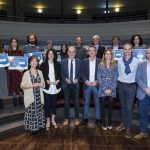
Researchers of two NANBIOSIS units success in the Third Millennium Awards: the Young Research Talent award to Julia Ramirez (NANBIOSIS U27) and the Research and Future Award to the NFP group (NANBIOSIS U9) Last November 8, four initiatives received the highest award in the eighth edition of the HERALDO contest Third Millennium Awards which represent the recognition of the Aragonese community from the youngest to the most consolidated trajectories in knowledge transfer, innovation, and scientific dissemination. The Paraninfo of the University of Zaragoza hosted this event in which researchers CIBER-BBN – NANBIOSIS were recognised this year: The Films and Nanostructured[...]
10 Nov
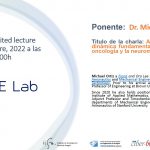
On the 17th of November, CIBER-BBN group TME lab – NANBIOSIS U13 Tissue & Scaffold Characterization Unit. organises the Conference “Applications of data-driven dynamics to oncology and neuromodulation” by Dr. Michael Ortiz. Michael Ortiz a Frank and Ora Lee Marble Professor Emeritus of Aronautics and Mechanical Engineering at California Institute of Technology. Prior to his arrival at Caltech in 1995, he was Professor of Engineering at Brown University. Since 2020 he also holds positions as Research Chair in the Institute of Applied Mathematics, University of Bonn and as Adjunct Professor and Timoshenko Distinguished Fellow in the departments of Mechanical Engineering[...]
09 Nov

The CIBER-BBN and the NANBIOSIS research community has met again, after two virtual editions, to celebrate the Sixteenth Annual Conference of CIBER-BBN. It has been a fantastic a face-to-face reunion during the days 7th-8th November 2022, in A Coruña, Spain. This edition has included sicientific sessions in mental health and in diabetes and metabolic diseases, presentations of internal collaborative projects, two plenary talks given by acknowledged experts in the fields of CAR-T therapies and gene therapies and an invitation to CIBERSAM and CIBERDEM scientific areas, as well as the new “Technological Development Platform of CIBER” to improve translational programs As[...]
27 Oct
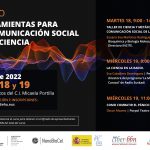
On October 18 and 19, was held the second course on Social Communication of Science, orgnized by NANBIOSIS U10 Drug Formulation Unit -(NanoBioCell Group of CIBER-BBN and UPV-EHU, this year entitled “Tools for the social communication of science“. The course aimed to provide doctoral students with communication with tools to be employed in their work as scientists when communicating their results or activity to the general public, patients, etc. They first day was mainly dedicated to the use of metaphors in science communication, starting with an interesesting talk by Susana Martinez, director of the Incite Foundation; ateendees had the opportuniy[...]
25 Oct
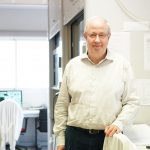
Ramón Martínez Máñez, researcher at the Polytechnic University of Valencia (UPV) and scientific director of the Bioengineering, Biomaterials and Nanomedicine area of the CIBER (CIBER-BBN) and NANBIOSIS U26, has obtained an ERC Advanced Grant –the most prestigious grant from the European Research Council– endowed with 2.5 million euros for the development of the EDISON project (Engineered Particles for Chemical Communication). This project focuses on the field of chemical or molecular communication. Its objective is the study, development and application of nanoparticles that are capable of communicating with each other and whose application would represent a revolution in the field of[...]
24 Oct

The MicrofabSpace and Microscopy Characterization Facility of IBEC, U7 unit of Nanbiosis, presented a stand and posters in the 15 edition of the annual IBEC’s Symposium which took place last October 19th in Barcelona. Researechers of this facility showed new microfabrication processes and microscopy tools, to worldwide researchers in the field of bioengineering. The MicroFabSpace and Microscopy Characterization Facility is one of the most experienced services in the IBEC’s Core Facilities. With a cleanroom research space, specialized in the microfabrication and characterization of micro-structured devices focussed on bioengineering and a microscopy space specialized in the characterization of biological samples, it[...]
21 Oct

On the 28th of October, we will be receiving the international visit at the Unversity of Zaragoza from Dr. Guillermo Artana from Laboratorio de Fluidodinámica-Facultad de Ingeniería-Universidad de Buenos Aires. The title of the talk will be “Microchannel capillarity pumping design“. The invited lecture is programed within the framework of the European project “Heart On chip based on induced pluripotent Stem cell Technology for personalized Medicine (CISTEM)” and counts with European funding: Horizon 2020 – Research and Innovation Framework Programme / H2020-MSCA-RISE-2017, grant agreement No.778354 in wich the University of Zaragoza participates through CIBER-BBN group TME lab – NANBIOSIS U13[...]
20 Oct
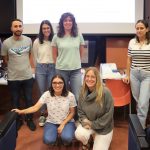
ICMAB-CSIC October 19th 2022 Amable Bernabé, from Nanbiosis U6 Biomaterial Processing and Nanostructuring Unit hosted from Monday, 3 October, to Wednesday, 5 October a course on “Characterization techniques for particulate materials”. The course counted with 10 participants from different CSIC centers. The course was an introduction to different techniques to characterize nanoparticles and other particulate matter, including the basic fundamentals of these techniques, sample preparation, practical examples and results interpretation. It is the fifth edition of the course, which started in 2018. Amable Bernabé, technician from the Soft Materials Service, prepares and offers this course to all the CSIC community, so everyone who needs[...]
19 Oct

More than 200 people attended the first edition of the TECNIO Conference that took place on October 19th, 2022 in Girona. Outstanding experts from research groups, companies and the Catalan administration discussed the model of technological sovereignty that Catalonia needs to generate high-impact innovation. As far as Nora Ventosa, President of the TECNIO Association and Scientific Director of NANBIOSIS U6 Biomaterial Processing and Nanostructuring Unit (from CIBER-BBN and IQAC): “Political management is the key to ensure that the path of transference follows a high speed train” Researchers of NANBIOSIS U2 Custom Antibody Service (CAbS) – Nb4D Group from CIBER-BBN and[...]
09 Oct

The NanoBioCel group of the CIBER BBN, which also runs NANBIOSIS U10 Drug Formulation unit , organized the Workshop #6 of the Moore4medical European project at the Alava Technology Park on October 4, 5 and 6 The Central Building of the Álava Technology Park hosted the ‘Workshop #6’ of the European project which. 80 people belonging to 68 organizations, including private companies and research groups from universities and research centers from 13 countries of the European Union, participated in a meeting that has the leadership of the Dutch multinational Philips in its divisions of electronics and medical systems and servic[...]
03 Oct

CIBER-BBN is looking for a scientific-technical manager within the framework of the European project H2020 SAFENMT SafeNMT aims to create an innovative open access platform for companies and laboratories to develop medical solutions based on nanotechnology. The manager will be coordinating the participation of the CIBER ICTS NANBIOSIS units in it, in collaboration with the CIBER-BBN management team, under the leadership of the scientific director of CIBER-BBN and IP of the project. The position requires good command of English and strong skills in coordinating researchers. Applications must be filed at CIBER’s weportal untill October 14.[...]
28 Sep

September 27th 2022 – Nanoligent SL, a Spanish biotech company specialized in the development of cancer treatments based on unique protein conjugates, today announces the completion of a Seed financing round of total € 2.8 M. The final closing of the Seed round consists of € 1 M investment by i&i Biotech Fund I (i&i Bio), an early-stage Life Science fund with teams in Luxemburg and Prague which is backed by the European Investment Fund. i&i Bio joined previous Nanoligent investors, Italian Angels for Growth, the largest network of business angels in Italy, and AVANTECA Partners, a Swiss privately held[...]
23 Sep

We are pleased to inform that the new book of Unique Scientific and Technical Infrastructures (ICTS) has been published by the Spanish Ministery of Sciencie and Innovation with the collaborations of the ICTS. You can download it download it here. The Spanish Map of Unique Science and Technology Infrastructures (ICTS, in Spanish) , goups biomedical technologies, cleanrooms, supercomputers, advanced lasers, telescopes, underground laboratories, synchrotrons, particle accelerators, biological reserves, solar, oceanic and hydraulic platforms, oceanographic research ships, and polar bases in Antarctica. A total of 29 ICTS, made up of 64 infraestructures, allow for ambitious research projects that attract first-rate talent and[...]
08 Sep

On September 7, the annual meeting of the directors of the 29 Singular Scientific and Technical Infrastructures (ICTS) of Spain took place in Seville. The event was organized in five round tables: Table 1 Development of in-house technology in ICTs and its transferTable 2 ICTS response to crisis situations: the COVID19 pandemic and the La Palma volcano eruptionTable 3 Digital Continuum: data management and processing in ICTSTable 4 Provision of shared ICT Services: connectivity and cybersecurity, implementation of open science in the cloudTable 5 Stimulation of scientific vocations and social interest in ICTSTable 6 National and international cooperation between ICTS[...]
07 Sep
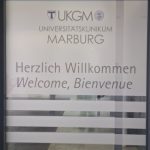
The scientific coordinator of NANBIOSIS U25 “RNM: Biomedical Application I”, Ana Paula Candiota, was recently awarded with a mobility fellowship from CIBER-BBN for a scientific exchange visit to Philipps-Universität Marburg, in Marburg, Germany. This scientific stage was motivated for a sustained collaboration between the research groups (GABRMN, in charge of U25 and Neurosurgery Lab group in Marburg), regarding the study of tumour microenvironment (TME) changes in Glioblastoma and possible relationship with the noninvasive MRSI-based biomarkers. Both groups have applied together to different funding calls including ERA-NET Transcan and Pathfinder Open, and Marburg group has hosted a predoctoral stage from a[...]
16 Aug
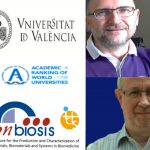
The Academic Ranking of World Universities (ARWU), known as Shanghai Ranking, which was made public on August 15, places the University of Valencia among the elite of the 300 best universities in the world and the second of the Spanish universities. This indicator organizes up to 20,000 university centers worldwide,based on transparent methodology and objective third-party data. ARWU is regarded as one of the three most influential and widely observed university rankings The NANBIOSIS U26 NMR: Biomedical Applications II created by CIBER-BBN is hosted by the University of Valencia is led by Prof. Ramón Martínez Ma´ñez and Prof Salvador Gil Grau[...]
16 Aug
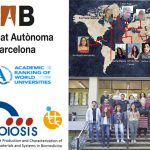
The Academic Ranking of World Universities (ARWU), known as Shanghai Ranking, which was made public on August 15, places the Autonomous University of Barcelona among the elite of the 300 best universities in the world. This indicator organizes up to 20,000 university centers worldwide,based on transparent methodology and objective third-party data. ARWU is regarded as one of the three most influential and widely observed university rankings Two of NANBIOSIS Units created by UAB and CIBER-BBN are part of this university: U1 Protein Production Platform (PPP), led by Toni Villaverde, Neus Ferrer and Mercedes Marquez, offer an “tailored” service for the design,[...]
27 Jul
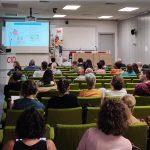
During the days 30 of June and 1st of July took place in Barcelona, in the auditorium of the Institute of Advanced Chemistry of Catalonia (IQAC-CSIC), the 1st Forum on Nanomedicine gathering scientists from the CSIC net Nanomed Conection and from the CIBER-BBN and its ICTS NANBIOSIS. This forum brought toguether researchers from the most eminent national research centers in nanomedicine, that during the two days meeting presented their works and findings and discussed the impact of nanomedicine in the fields of drug delivery, diagnosis and therapy. The workshop was open by the Director of IQAC-CSIC, Jesús Joglar, the Scientific Coordinator[...]
05 Jul
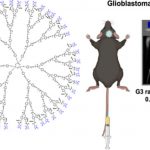
The joint expertise of CIBER-BBN Nanomol Group – NANBIOSIS U6 from at ICMAB-CSIC (José Vidal and Vega Lloveras) and NANBIOSIS U25 at UAB (Ana Paula Candiota), led to a recently published article in the prestigious journal Biomacromolecules Brain tumours such as Glioblastomas are a challenge in the clinics and proper diagnosis and follow-up are crucial for patient outcome. Contrast agents are usually administered to patients for assessing blood brain barrier integrity and quantitation of enhancing areas are part of the clinical criteria for estimating response/relapse. However, most contrast agents currently used in clinics are based in metal elements such as[...]
25 Jun

The use of protein nanoparticles as biomaterials have been rising in recent years due to their characteristics: high biocompatibility, structural versatility, biodegradability and plasticity of design. We can later incorporate peptide ligands for specific targeting as fusion proteins and use these nanoparticles for targeted nanomedicine. However, not all proteins can be used as scaffolds for targeted drug delivery, as they need to meet certain criteria. First, it is crucial that the proteins used as a scaffold allow site-specific drug conjugation. The stability and proteolysis resistance of these proteins is also important to remain assembled during the bloodstream circulation. In addition,[...]
10 Jun
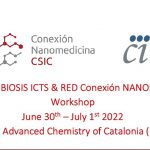
The Nanomed Conection of the Spanish Research Council (CSIC) and the Networking Biomedical Research Center in Bioengineering, Biomaterials and Nanomedicine (CIBER-BBN), together with its singular infrastructure NANBIOSIS, have organised a Forum on Nanomedicine Research during the days 30 of June and 1st of July to be held at the Institute of Advanced Chemistry of Catalonia (IQAC-CSIC) in Barcelona. The event will be also transmitted on-line previous registration. This is the first meeting gathering together scientists from CIBER-BBN and its ICTS NANBIOSIS and from the CSIC’ Nanomed Conection with a shared interest in Nanomedicine. This two days meeting will allow researchers[...]
09 Jun

ICTS underpins the Spanish reputation for research excellence. In the picture: the new poster of the ICTS map in which NANBIOSIS facilities have been highlighed The term Unique Scientific and Technical Infrastructure (ICTS) refers to facilities, resources, or services for the development of top-quality cutting-edge research, as well as the communication, exchange, and preservation of knowledge, the transfer of technology, and promotion of innovation. They are unique or exceptional in their fields, with a high cost of investment, maintenance, and operation, and are of a strategic importance that justifies their availability to all actors in the field of R&D&I. T[...]
03 Jun

NANBIOSIS Unit 17 (Confocal Microscopy) is a CIBER-BBN unit located in the Cell Culture Unit, CAI Medicine and Biology, Faculty of Medicine at the University of Alcala. This unit of the ICTS NANBIOSIS supports researchers interested on their different studies visualizing diverse samples as tissues, cells, bacterial biofilms, etc. This unit owns the tools, the know-how and the expertise to accomplish researchers’ goals either by transmission or reflection fluorescent. We are happy of sharing this video in which researchers of Unit 17 show all the steps required for the visualization of the PV-1 molecule, also known as PLVAP, on t[...]
25 May
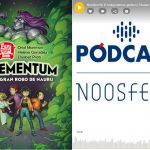
Elisabet Prats Alfonso, a researcher in the team coordinating NANBIOSIS U8 Micro– Nano Technology Unit explains in a podcast her most recent research based on the functionalization of chemical and biochemical sensor platforms as well as the characterization of materials such as graphene for both neuronal recording and biomarker detection. Her work is part of the Graphene Flagship project in which she collaborates with relevant European groups. Eli Prat as a researcher Ph.D. in Chemistry and also dedicated to dissemination is a great exemple for the NANBIOSIS aim to encourage STEAM scientific vocations especially among girls. In addition, she is[...]
16 May

Nora Ventosa, the Scientific Director of NANBIOSIS U6 of Biomaterial Processing and Nanostructuring Unit (and IP of the NANOMOL Group of CIBERBBN at ICMAB-CSIC) has been appointed Research Professor in the last call of the Spanish National Reserach Council (CSIC) This elective process for the selection and appointment of career civil servant, by internal promotion, in the Scale of Research Professors of Public Research Organisms had oppen 6 new positions for Professors under the Materials Science. Nora Ventosa is a Chemical Engineer by the Institut Químic de Sarrià (IQS) and Doctor in Chemistry by the Universitat Ramon Llull. Her researc[...]
10 May

Work performed at Unit 25 of Nanbiosis ICTS of “NMR: Biomedical ApplicationsI” is being shown at the Joint annual meeting ISMRM-ESMRMB (May 7-12th) London, with the participation of CIBER-BBN group members Ana Paula Candiota, Silvia Lope-Piedrafita, Miquel Cabañas (abstract 1), Carles Arús, Gulnur Ungan, Margarida Julià-Sapé, Alfredo Vellido and Carles Majós (abstract 2). In the first abstract, entitled “High resolution Multi-voxel spectroscopy using CSI-semi-LASER for mouse brain preclinical studies” we focused into improving quality of MR spectra obtained from mouse brain, a key factor when trying to pursue metabolomic-based biomarkers. The second abstract, entitled “MRSI-detected pattern in glioblastoma patients on[...]
05 May
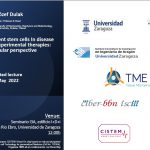
On the 20th of May, we will be receiving an international visit at the Unversity of Zaragoza from Pr. Józef Dulak from Jagiellonian University, Kraków, Poland. The title of the talk will be “Induced pluripotent stem cells in disease modelling and experimental therapies: cardiovascular perspective“. The invited lecture is programed within the framework of the European CISTEM project, in wich the University of Zaragoza participates through CIBER-BBN group TME lab – NANBIOSIS U13 Tissue & Scaffold Characterization Unit. The event will take place at 12:00 in the I3A SEMINAR (2nd floor) of Campus Rio Ebro, of University of Zaragoza Induced pluripotent[...]
03 May
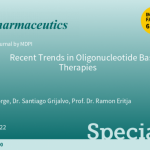
Dr. Ramon Eritja, Scientific Director of NANBIOSIS unit 29 of Oligonucleotide Synthesis Platform (OSP) and Dr. Santiago Grijalvo researcher at NANBIOSIS unit 12 of Nanostructured liquid characterization, from CIBER-BBN and IQAC-CSIC, together with Dr. Andreia F. Jorge, from Coimbra Chemistry Centre (CQC), acting as guest editors of journal Pharmaceutics, of MDPI Publisher, welcome authors to submit their articles on special issues on Recent Trends in Oligonucleotide Based Therapies. In the past few decades, significant efforts have been made towards the clinical application of oligonucleotides. However, the potential of the therapeutic applications of RNA-based strategies have recently been spotlighted after the first approval of mRNA vaccines in response to COVID-19[...]
02 May
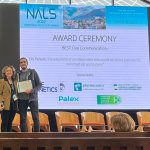
During the last 27-29 April, the 3rd International Conference on Nanomaterials Applied to Life Sciences 2022 (NALS 2022) has taken place in the Excellence Campus of Universidad de Cantabria in Santander (Spain), organized by the University of Cantabria and Institute Valdecilla-IDIVAL. NALS 2022 has been a multidisciplinary conference series sharing new results and ideas in the fields of biosensors, lab on a chip, drug delivery nanopharmacy. nanobiotechnology, intelligent nanomaterials, magnetic materials, nanotoxicity, antimicrobials, novel applications of 3d bioprinting and nanoimaging. NANBIOSIS has been represented at this edition by members of several of its units, among them we must highlight the set of four ora[...]
29 Apr
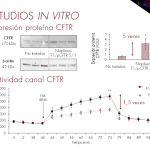
Cystic fibrosis is an inherited genetic disease that mainly affects the lungs and the digestive system On April 6, the first meeting was held, on the one hand, with people with Cystic Fibrosis and the Euskadi Cystic Fibrosis Association (Arnasa) and, on the other, with the NanoBioCel research group of the CIBER-BBN and the University of Basque Country, which is also part of the ICTS Nanbiosis through the Drug Formulation Unit U10. The cooperative relationship between the NanoBioCel research group and Arnasa began approximately 5 years ago with the contributions made by the association to the NanBioCel group for researc[...]
28 Apr
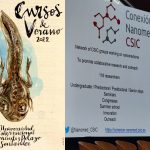
From 11 to 15 of July 2022 will take place the Nanomed-CSIC Summer School, organized by the Menéndez Pelayo International University (UIMP), with the sponsorship and collaboration of the CSIC. The Nanomed-CSIC Summer School brings together scientific experts from all over Spain in different fields of nanomedicine and is aimed at all research staff and students, at any stage of basic or advanced scientific training. There are scholarships from the Menéndez Pelayo International University (UIMP) which application period ends on May 3, 2022. For further informations and appalications follow this link The course reviews the latest international advances in areas[...]
27 Apr

Dr. Anna Aviñó, Scientific Coordianator of NANBIOSIS unit 29 of Oligonucleotide Synthesis Platform (OSP) and Dr. Carme Fàbrega from the Nucleic Acid Chemistry group from CIBER-BBN and IQAC_CSIC, together with Dr. Claudia Riccardi from the University of Naples Federico II, Dr. Stefania Mazzini from University of Milan, and Dr. Raimundo Gargallo from the University of Barcelona, acting as guest editors of the journal Frontiers in Chemistry, welcome authors to submit their articles on special issues on Nucleic Acid-Based Aptamers in Therapeutics and Diagnostics. Nucleic acid‐based aptamers are short DNA or RNA sequences able to adopt specific three‐dimensional architectures. The high affinity and selectivity shown for a selected target, as well as t[...]
22 Apr
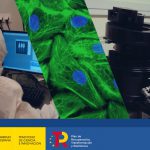
The Minister of Science and Innovation, Diana Morant, chaired the XI meeting of the Council for Scientific, Technological and Innovation Policy, in which the update of the Map of Singular Scientific and Technical Infrastructures, the ICTS Map for 2021-2024, was approved. The ICTS are facilities dedicated to cutting-edge research of the highest quality, as well as to the transmission, exchange and preservation of knowledge, technology transfer and the promotion of innovation. The map has 29 ICTS distributed among all the territories, includes NANBIOSIS, the Infraestructure for Production and Characterization of Nanomaterials, Biomaterials and Systems in Nanomedicine with its 26 units.[...]
21 Apr
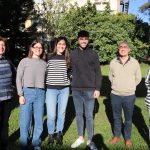
The discovery of the mRNA vaccines for the treatment of coronavirus, as well as new medicines for the treatment of genetic diseases, has been important in the quest of solutions for undrugable diseases in an unexpected short-time. Thus, the chemical modifications of nucleic acids with diagnostic and therapeutic purposes is now a reality, a revolution that promises to give hopes on unsolved medical problems or optimize previous approaches, largely due to the research push for the development of mRNA vaccines against SARS-CoV-2 infection. Now, the prestigious “The Chemical Record” journal has invited the Nucleic Acids Chemistry group, of IQAC-CSIC and[...]
18 Apr
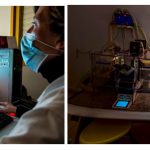
ICTS-NANBIOSIS. UNIT 17 CONFOCAL MICROSCOPY SERVICE. (CIBER-BNN. UNIVERSITY OF ALCALÁ) The UAH research groupTranslational research of chronic diseases associated with aging and kidney disease has recently published an article in which unit NANBIOSIS unit 17 and Leica SP5 confocal microscope has had a great contribution Located in the Support Center for Research in Medicine and Biology, Faculty of Medicine and Healthe Sciences, University of Alcalá (UAH). The Unit is equipped with a Leica TCS-SP5 confocal microscope. The confocal module is equipped with three spectral detection channels, AOBS (Acousto-optical beam splitter) and a resonant scanner system that allows analysis at hig[...]
08 Apr
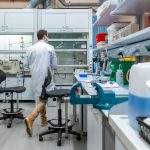
The aim of the quality certification obtained is to ensure the quality of the service provided and to continue with its improvement and extension to future services. The Scientific and Technical Service for the characterization of nano and biomaterials, the Soft Lab, run by the Nanomol Research Unit of the Institute of Materials Science of Barcelona (ICMAB, CSIC), and which is part of Unit 6 of the ICTS Nanbiosis, and CIBER-BBN, aims to offer characterization services of micro- and nanostructured soft molecular materials to the entire scientific community that requires them. To this end, the Soft technical service has several laboratories at[...]
07 Apr

In the Picture: Gemma Gabriel and Rosa Villa World Health Day is celebrated every year on 7 April (on the aniversary of the World Health Organization constitution) to raise awareness about the ongoing health issues that concern people across the world. This year, Xarctec Salud has called the attention on patients with brain diseases and spinal cord injuries and has highlighted the GAB Lab. Biomedical Applications Group of the IMB-CNM-CSIC and CIBER-BBN, the group, led by Rosa Villa, coordinates unit 8 ICTS NANBIOSIS of Micro-nano Technology Unit. https://youtu.be/wiA5oFc6Q48 The Xartec Salut is a network, led by CREB UPC, made up of 47[...]
06 Apr

On April 1st PhD candidate Patricia Cámara Sánchez defended her doctoral thesis entitled “Targeting of the breast cancer stem cells to improve the treatment of triple negative breast cancer“, where ICTS-Nanbiosis Unit 20 participated in the in vivo assays. The thesis was supervised by Dr. Ibane Abasolo (scientific director of Unit 20 from CIBER-BBN and VHIR). Nanbiosis was also present within the jury, with Dr. Ana Paula Candiota (scientific coordinator of Unit 25 from CIBER-BBN and UAB) acting as secretary. Patricia Cámara graduated as biochemist, did the master’s degree in Translational Biomedical Research from VHIR-UAB. Shortly after, started the PhD, which was aimed[...]
05 Apr
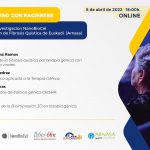
Cystic Fibrosis is a genetic disorder that affects mostly the lungs, but also the pancreas, liver, kidneys, and intestine. It is a genetic, degenerative and chronic disease, with a population incidence is 1 in 5,000, so it is considered among the so called “Rare Diseases” The most common symptoms are continuous colds, repeated infections, decreased lung capacity, impossibility of fat absorption and malnutrition As there is no cure for the disease, daily treatment is the only option to have an acceptable quality of life The NanoBioCell Research Group, which coordinates unit 10 of NANBIOSIS of the CIBER-BBN and the UPV/EHU, has a wide experience in comprehensive researc[...]
29 Mar
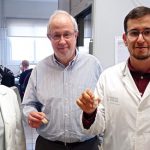
CIBER, March 28 2022 Researchers from the Polytechnic University of Valencia (UPV) and the CIBER-BBN has demonstrated, for the first time, the potential of using “translator” nanoparticles to facilitate communication between different types of cells or microorganisms. His study could have application in multiple fields, especially in the medical field for the prevention and treatment of cancer. “We have shown that it is possible to communicate microorganisms from different kingdoms using nanoparticles as translators. The nanoparticles process a message produced by the first type of cells (bacteria) and transform it into an understandable message for the second type of cells[...]
28 Mar
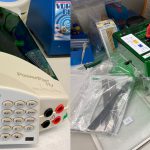
NANBIOSIS, U20. In Vivo Experimental Platform, led by Dr. Ibane Ibasolo, has been updated and improved as a result of its participation in the project FICTS1420-20, selected by the MICINN for co-financing by the FEDER Program in ICTS 2014-2020 (Equipment for setting standardized immunotoxicology assays for the U20 -NANBIOSIS I17 Action of the Investment Plan-)[...]
22 Mar
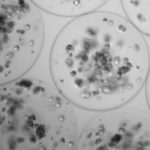
In the picture: microencapsulated cardiospheres 10X Captured Brightfield with DM_RGB_Brightfield with DM The European project POSITION-II has been selected for publication in the ‘Results in Brief’ section of the Community Research and Development Information Service (CORDIS) website. CORDIS is the European Commission’s primary source of results from the projects funded by the EU’s framework programmes for research and innovation (FP1 to Horizon 2020). The resulting short article has now been published on the CORDIS website in six languages. The European project POSITION II “A pilot line for the next generation of smart catheters and implants” is an alliance of European[...]
20 Mar
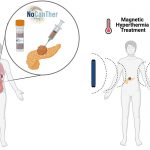
Pancreatic ductal adenocarcinoma is a highly devastating orphan disease with poor prognosis even when diagnosed early (The survival rate after 5 years (< 5%) has not changed over the last 30 years, despite tremendous research efforts) The european project NoCanTher, in wich participates NANBIOSIS U20 of (VHIR and CIBER-BBN) is a nanotechnology-based approach aimed to scale-up under GMP conditions and evaluate a nanoformulation for a combined therapy with chemotherapy against this pancreatic cancer. The international clinical study, carried out in the framework of the project is now incorporating the first pacient in Spain with this type of nanotherapy. The clinica[...]
17 Mar
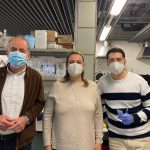
A CIBER-BBN team at the University of Zaragoza has developed intelligent shuttles (cell vesicles -exosomes-) to transfer nanoparticles to the interior of tumor cells and destroy them by means of heat and without drugs, following the “Trojan horse” strategy. “NANBIOSIS U9, “Synthesis of Nanoparticles Unit has developed the procedure to be able to internalize gold nanoparticles, with surface plasmon in the NIR electromagnetic range, inside extracellular vesicles derived from stem cells. The synthesis of the gold nanoparticles has been produced according to the synthesis procedures of UNIT 9 of the ICTS NANBIOSIS based on the galvanic substitution reaction in t[...]
08 Mar
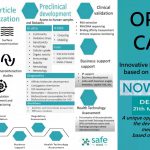
Start-ups / SMEs! Are you working on innovative medical products using nanotechnology? This is your call for development and marketing solutions! Last week took place the SAFE-N-MEDTECH Open Call on line info session with the idea to present the open call with a bit more detail. A few presentations and specially a time for questions and answers were organized by Anaïs Le Corber, Network Manager of CEBERG, the council of European Bioregions, partner of the project. The webinar was recorded and it is available here: First of all, Angel del Pozo, Coordinator of the SAFE-N-MEDTECH, gave an insight of t[...]
02 Mar

Esther Pueyo, member of the BSICoS group, which coordinates NANBIOSIS U27 “High Performance Computing” from CIBER-BBN and I3A-UZ, participes with Lina Badimon, professor at the CSIC and group leader at the CIBERCV in the first of a series of videos where two women scientists share their experiences, prepared by the Scientific Culture and Innovation Unit (UCC+i) of the CIBER Both researchers work in the field of Cardiology and share their passion for science and their vocation to help patients. In this video they talk in depth about their career, their difficulties, their achievements, and what their vision is about t[...]
28 Feb

WHY DO CELEBRATE TODAY THE INTERNATIONAL #RareDiseaseDay? 29 of February is a ‘rare’ date and February, a month with a ‘rare’ number of days, has become a month to raise awareness about rare diseases and their impact on patients’ lives. Since 2008 thousands of events happen every year all around the world and around the last day of February with the aim of improving equity and reducing stigmatization for people who live with more than 6,000 rare diseases. WHAT ARE RARE DISEASES Rare diseases are pathologies or disorders that affect a small part of the population (less than 5 per 10,000 inhabitants) and[...]
21 Feb
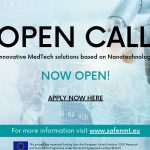
An Open Call within H2020 project SAFE-N-MEDTECH OITB -Safety testing in the life cycle of nanotechnology-enabled medical technologies for health– has been launched with the objective of providing services and support to companies and other organizations with the aim of accelerating the development and commercialization of innovative MedTech solutions based on nano-enabled technology. SAFE-N-MEDTECH in which CIBER-BBN is a partner througth its ICTS NANBIOSIS, gathers expertise from 28 partners around the world focused in enabling the safe translation of nano-enabled medical technologies from Proof of Concept to markets and clinical practice funded project SAFE-N-MEDTECH with its key expertise and extensive knowledge in[...]
17 Feb
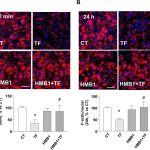
Obesity is caused by the enlargement of the white adipose tissue (WAT) depots, characterized by the hypertrophic enlargement of malfunctioning adipocytes within WAT, which increases the storage of triglycerides (TG) in the lipid droplets (LD). Adipogenesis pathways as well as the expression and activity of some extracellular matrix receptors integrins are upregulated. Integrinβ1 (INTB1) is the main isoform involved in WAT remodeling during obesity and insulin resistance-related diseases. We recently described Integrin Linked Kinase (ILK), a scafold protein recruited by INTB1, as an important mediator of WAT remodeling and insulin resistance. As the few approved drugs to fight obesity hav[...]
15 Feb
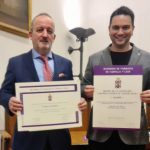
The leader of the NanoBioCell Group form CIBER-BBN and UPV/EHU, Jose Luis Pedraz, and the reaearches Laura Saenz del Burgo and Markel Lafuente have received the 2021 Award from the Academy of Pharmacy of Castilla y León, on February 4, at the city of Salamanca, for the work entitled: “Design and Characterization of a biotin formulated with nanocellulose, alginate and Gags for use in 3D bioprinting and application in cartilage regeneration“, the content of this research work has been published in the Journal Macromolecular Science under the title: “Chondroitin and Dermatan Sulfate Bioinks for 3D Bioprinting and Cartilage Regeneration” T[...]
09 Feb

The International Day of Women and Girls in Science on February 11 honor women’s significant achievements in science and place a much-needed focus on girls entering Science, Technology, Engineering, and Mathematics (STEM) careers. We want to take this day to congratulate all the women scientists, especially our scientists at NANBIOSIS ICTS. Some of them take an active role in the dissemination of research results and reseach contribution to the society, as Dr. Ibane Abasolo who last week participated in different events to explain her team work in the figth against breast cancer. Ibane Abasolo is the Scientific Coordinator of NANBIOSIS U20 and also[...]
08 Feb

The International Day of Women and Girls in Science on February 11 honor women’s significant achievements in science and place a much-needed focus on girls entering Science, Technology, Engineering, and Mathematics (STEM) careers. We want to take this day to congratulate all the women scientists, especially to our scientists at NANBIOSIS ICTS. In this occasion we want to put the spotlight on Raquel Bailon, researcher of Bsicos Group coordinating NANBIOSIS Unit 27 of High-Performance Computing form CIBER-BBN and University of Zaragoza-I3A, who last month has been highlighted by Inside Signal Processing Newsletter. In the interview Dr. Raquel Bailon talks about her motivations[...]
07 Feb

The International Day of Women and Girls in Science on February 11 honor women’s significant achievements in science and place a much-needed focus on girls entering Science, Technology, Engineering, and Mathematics (STEM) careers. We want to take this day to congratulate all the women scientists, especially to our scientists at NANBIOSIS ICTS, some of whom take an active role in the organization of events to celebrate this day, as Estefanía Peña in the initiative “Women Scientists in your neighborhood” form the University of Zaragoza. Estefanía Peña is the Cientific Coordinator of Unit 13 of Tissue & Scaffold Characterization from t[...]
04 Feb
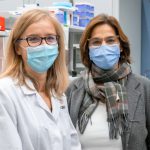
Nanovesicles, known as quatsomes, have been successfully engineered to encapsulate and deliver microRNAs for the treatment of tumors.These nanovesicles are produced by a simple GMP compliant process, an unavoidable requirement for the clinical use of new drug candidates.The study, published in Small, has been highlighted in the Women in Materials Science issue of Advanced Materials. “The beauty of these quatsomes nanovesicles is that they can be easily engineered for the delivery of a variety of nucleic acids. Importantly, they are stable at room temperature, which avoids problems associated to cold chain requirements”, says Nora Ventosa, Scientific Director of NANBIOSIS U6.[...]
03 Feb
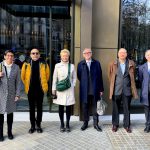
Barcelona, Spain – Milan, Italy, February 3rd, 2022 – Nanoligent SL, a biotech company specialized in the development of nanotechnology-based cancer treatments, today announces the completion of the first closing of a Seed financing round of €1M. The round has been led by members of Italian Angels for Growth, the largest network of business angels in Italy, through the investment vehicle Nanolinvest, and AVANTECA Partners, a Swiss privately held asset management firm, both specialized in supporting innovative early-stage life-science companies primarily in Europe. An equity campaign, is still ongoing on Doorway, an online investment platform, thus promising to provide additional funding[...]
03 Feb
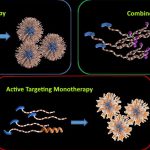
Twenty years ago, the 4 February was declared World Cancer Day with the global challenge of cancer would not be forgotten. Since then, huge progress has been made to understand, prevent, diagnose, and treat cancer. NANBIOSIS as an ICTS (Singular Scientific and Technical infrastructures) for biomedical research plays a very important role in the fight against cancer. Dr. Miriam Royo, who leads NANBIOSIS unit 3 of Synthesis of Peptide, explains one of the projects in which the ICTS is involved in relation with cancer therapy. The improvement of solubility and stability of clinically approved chemotherapeutic drugs still represent a big[...]
24 Jan
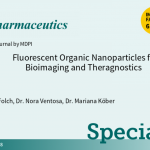
Nora Ventosa and Mariana Köber, from NANBIOSIS Unit 6 of CIBER-BBN and ICMAB-CSIC, and Judit Morlà-Folch, from the BioMedical Engineering and Imaging Institute at the Icahn School of Medicine at Mount Sinai, New York, are editors of the Special Issue of MDPI Pharmaceutics. The Special Issue on “Fluorescent Organic Nanoparticles for Bioimaging and Theragnostics“ belongs to the “Nanomedicine and Nanotechnology” section and has a deadline for manuscript submissions on 25 July 2022. The guest editors explain the main topic of this Special Edition: “Fluorescence-based techniques play an essential role in the study of biological events in tissues and animals due to their specificity and noninvasive nature. However,[...]
13 Jan
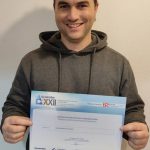
Edorta Santos Vizcaíno has been awarded as Best Emerging Researcher in the biomedical area by the Bioaraba Health Research Institute in the XXII edition of the Research and Innovation Conference. This award aims to recognize the work of researchers under the age of 40 who carry out their research activity in any public center of the Araba Health Network (OSI ARABA UNIVERSITY HOSPITAL / BIOARABA). The main award´’s criteria are the quality of the research carried out, active participation in public and private research projects, fidelity to the line of biomedical research and the usefulness and interest of the researc[...]
12 Jan

A new work by researchers from the CIBER-BBN at the Barcelona Institute of Materials Science ICMAB-CSIC, together with a team from the University of Rome Tor Vergata, presents new nanovesicles capable of crossing biological barriers such as cell membranes, maintaining their sensory capacity, making them attractive probes for intracellular biomarker detection. “The development of probes capable of detecting the biological environment and signaling the presence of a specific target molecule is a challenge with relevance in a variety of biomedical applications, from drug administration to diagnostic tools” says Mariana Köber, one of those responsible of the investigation together with Nora[...]
11 Jan
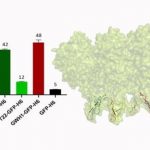
Researchers of NANBIOSIS Units 1 and 18, from CIBER-BBN at the Institut de Biotecnologia i de Biomedicina (IBB-UAB) and the Institut de Recerca Sant Pau (IIB-Sant Pau) presents the finding of a significant antimicrobial activity in the targeting peptide T22, which is used for antitumor therapy directed against CXCR4 + stem cells, with clinical interest in more than 20 types of human cancer, including colorectal cancer. The study describes how said activity has a significant effect on several bacterial species of clinical importance: “we have detected antimicrobial activity associated with T22 and inhibition of biofilm formation on Escherichia coli, Staphylococcus[...]
07 Jan
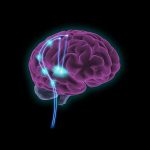
A study published in Nature Nanotechnology shows that flexible brain probes made of graphene micro-transistors can be used to record pathological brain signals associated with epilepsy with excellent fidelity and high spatial resolution. This research was led by the Institute of Microelectronics of Barcelona (IMB-CNM-CSIC), the Catalan Institute of Nanoscience and Nanotechnology (ICN2) and the University College London Queen Square Institute of Neurology (UK). The ability to record and map the full range of brain signals using electrophysiological probes will greatly advance our understanding of brain diseases and aid the clinical management of patients with diverse neurological disorders. However, current technologies[...]
05 Jan

Nora Ventosa, Scientific Director of NANBIOSIS Unit 6, is the president of the new Association of TECNIO. the association to promote technology transfer to Catalonia that was established on November 8, 2021 with the collaboration of all Catalan universities, the I-CERCA foundation and the CSIC. This association promotes technology transfer to companies through the connection of research groups with TECNIO, as it is the case of the DBA. An initiative that includes the support of the Generalitat per mitjà d’ACCIÓ, the agency for the competitiveness of the company of the Departament d’Empresa i Treball. The new Associació TECNIO is mad[...]
28 Dec
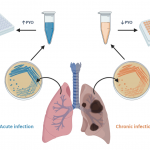
Pseudomonas aeruginosa is a common multidrug-resistant pathogen that causes acute and chronic infections. However, P. aeruginosa, as many other bacterial species, has developed resistance to antibiotics being difficult to treat. For this reason diagnostic methods allowing detection at early stages of the infection are required and, therefore, efficient biomarkers of infection are very helpful. These fast diagnosis will help on the subsequent therapeutic treatment. The Nb4D group of CIBER-BBN and IQAC-CSIC (led by M.-Pilar Marco) has recently conducted a research to develop a highly sensitive, specific and reliable immunochemical assay to detect pyocyanin (PYO), one of the most important virulence factors[...]
24 Dec

Nucleic Acid Chemistry is an interdisciplinary discipline that combines organic chemistry, biochemistry, pharmacology, materials chemistry and biophysics. It started soon after the Watson–Crick model of DNA with the synthesis of the first dinucleotide, published in 1955. However, in the last decade, this field has blossomed, with the demonstration that Nucleic Acid Chemistry can provide innovative solutions to health problems such as vaccination, pathogen detection, and the treatment of metabolic or genetic diseases as well as providing important tools for the interrogation of cellular mechanisms. Profesor Ramon Eritja, Scientific director of the Oligonucleotides Synthesis Platform U29 from ICTS NANBIOSIS will chair[...]
23 Dec

A study published in “Nature Nanotechnology” shows that flexible brain probes made of graphene micro-transistors can be used to record pathological brain signals associated with epilepsy with excellent fidelity and high spatial resolution. This research was led by the Catalan Institute of Nanoscience and Nanotechnology (ICN2), the Institute of Microelectronics of Barcelona (IMB-CNM-CSIC) and the University College London Queen Square Institute of Neurology (UK). Barcelona, Wednesday 22 December 2021. The ability to record and map the full range of brain signals using electrophysiological probes will greatly advance our understanding of brain diseases and aid the clinical management of patients wit[...]
22 Dec

The final decision on the call for funding of Singular Scientific and Technical Infrastructures (ICTS) within the framework of the Recovery, Transformation and Resilience Plan in 2021 for has been published. These grants are intended to facilitate the execution of the Strategic Plans of the ICTSs included in the current National Map of ICTSs, through the execution of the investments provided for in their investment plans and declared of high priority by the Advisory Committee for Singular Infrastructures (CAIS). Two applications were submitted to this call by NANBIOSIS: one by the CIBER node named “Towards a new generation of Infrastructur[...]
21 Dec

The medicine of the future is an increasingly tackled topic. In the context of global concern for the sustainability of the health system (chronic diseases, new disorders, aging population and financing problems), nanomedicine could promote more affordable and personalized health care and improve the quality of life of the patients. Between innovative techniques already implemented and concepts that evoke science fiction (nanobots, fluorescent particles working as spies, tiny Trojan horses introduced into our body …), nanomedicine generates great expectations. Nanomedicine, what is it exactly? Nanomedicine is the application of nanotechnology to medicine, that is, the use of nanotechnologic systems for[...]
03 Dec

National and international leading researchers met online last November 15 and 16 at the XV CIBER-BBN Annual Congress to discuss the latest advances in bioengineering, biomaterials and nanomedicine research, and promote further collaborations in the field. This year’s CIBER-BBN Annual Conference included three plenary lectures given by internationally recognized experts in the fields of SARS-CoV-2 infection and vaccination, biomedical signal processing for sleep disorders, and regenerative medicine and biosensors. In addition to a selection of internal collaborations, valorization projects and collaboration projects with the CIBER of Oncology, the three programs of the Precision Medicine Infrastructure (IMPaCT) were presented. NANBIOSIS ICTS[...]
01 Dec
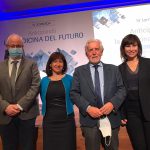
Scientists of CIBER-BBN and NANBIOSIS ICTS have participated in the 4th Conference “Anticipating the Medicine of the Future”, which took place on November 30th, organized by the Roche Institute Foundation. The topics for this ediction had been identified by the Observatory of Trends in the Medicine of the Future: Pharmacogenomics, Nanomedicine and Epigenomic The event counted with three roundtables for discussion in relation to the three topics. The second one, on Nanomedicine, was moderated by Joaquín Arenas, Director of the Research Institute of the 12 de Octubre University Hospital. Ramón Martínez Máñez, Professor of Inorganic Chemistry at the Interuniversity Researc[...]
29 Nov
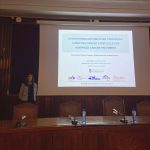
Sara Montero, researcher of the “Drug Delivery and Targeting” of CIBER-BBN and VHIR, presented her thesis work on November 22 “Nanotecnnology mediated extrategies targeting cancer stem cells for advanced cancer tratment”, directed by Dr. Simó Schwrtz and Dr Diana Rafael. In vivo experiments where carried out through the Unit 20 of the ICTS NANBIOSIS. The work presented by Sara Montero shows two different types of therapeutic strategies for the treatment of advanced breast and colon cancer. Both strategies focus on blocking proteins essential for the survival and proliferation of cancer stem cells (CMC), known to be the main responsible for current therapeutic failures, tumor[...]
28 Nov
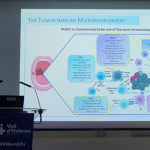
Patricia González, researcher of the “Drug Delivery and Targeting” of CIBER-BBN and VHIR, presented her thesis work on November 19 where she lays the foundations to understand the role of different subpopulations of extracellular vesicles (VEs) secreted by tumor models in the regulation of tumor plasticity, as well as its effect on the tumor microenvironment and disease progression. In the project, it has been described for the first time how the VEs secreted by the cancer stem cell subpopulation are responsible for activating fibroblasts in the tumor microenvironment and promoting angiogenesis, thus facilitating disease progression. Furthermore, it has been possib[...]
26 Nov

The Unit 10 of Drug Formulation of the ICTS NANBIOSIS coordinated by the CIBER-BBN NanoBioCel group directed by Jose Luis Pedraz, which belongs to the University of the Basque Country, has been present at the signing of the agreement that gives support by the Provincial Council of Alava within the framework of the Advance Pharma Development project, together with the research and technological development center TECNALIA. With this agreement, the NanoBioCel research group will receive in the next two years (2021-2023) a contribution of 650,000 €, which will allow the hiring of research personnel and the purchase of specific equipment[...]
22 Nov
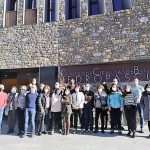
Twenty five Spanish researchers linked to the Higher Center for Scientific Research, CSIC, who are working more directly on the project ‘Point-of-care tests for the rapid detection of SARS-CoV-2’ – Studies for the development of technologies effective diagnosis and early detection of SARS-CoV-2- have met since last Wednesday and until this Friday at the Benasque Science Center ‘Pedro Pascual’ to analyze the state or of the different programs and lines of research on the covid-19. After months of intense work, among the most outstanding achievements in relation to the detection of the genetic material of the virus, is the development[...]
15 Nov

The CIBER for Bioengineering, Biomaterials and Nanomedicine (CIBER-BBN) will hold its XV Annual Congress, which will be held online for another year, on November 15 and 16. The conference will begin with a welcome that will be given by Cristóbal Belda, director of the ISCIII, and the scientific director of CIBER-BBN Ramón Martínez Máñez, and will aim to share advances in research in bioengineering, biomaterials and nanomedicine, in addition to advancing synergies with other disciplines and institutions. This year’s edition will include three plenary talks given by internationally recognized experts in the fields of SARS-CoV-2 infection and vaccination, biomedical signa[...]
04 Nov

Semiconductors are materials used in a wide ranfe of applications since they are capable of capturing light and allowing us to take advantage of it. In addition, if we reduce its size to the nanometric scale we can activate additional very interesting properties On October 16, “Technoscience and Energy” took place in Inseec, Lyon (France), a science-industry transfer event between French and Spanish companies and researchers from the energy sector in France. Among the invited speakers was María Bernechea Navarro, ARAID Investigator, at the Institute of Nanoscience and Materials of Aragon at University of Zaragoza-INMA. In her talk, entitled “COLLOIDAL[...]
02 Nov
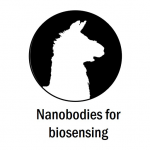
Next November 8, the researcher of NANBIOSIS U2 Custom Antibody Service (CAbS) J.-Pablo Salvador will host the Seminar “Nanobodies for biosensing” in the framework of European Biosensor Symposium digital seminar series which are schedulled on the third Tuesday of every month. Nanobodies® (Nbs) are the recombinant binding domain from the heavy chain antibodies tipically produced from camèlids. Besides their great potential as molecules in drug development, Nanobodies possess excellent functional properties that aid in their development for diagnostic tools. In this seminar, Dr. Salvador will explain the the outstanding properties of Nanobodies. Three graduate student speaker and up to five graduat[...]
29 Oct

Dr. Ramon Mangues, head of the Oncogenesis and Antitumor Group and Scientific Director of NANBIOSIS U18 Nanotoxicology Unit of CIBER-BBN at the Sant Pau Research Institute, has been recently elected as a new member of the Royal Academy of Pharmacy of Catalonia. The celebration will take place on November 8 at 7 pm, at the headquarters of the RAFC, (Royal Academy of Pharmacy of Catalonia) which was the headquarters of the old Hospital de la Santa Cruz since the 15th century, located at Calle del Hospital, 56, in Barcelona. During the event, Dr. Mangues will read his admission speech “Selectiv[...]
25 Oct
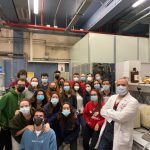
NANBIOSIS U6, Biomaterial Processing and Nanostructuring Unit from CIBER-BBN and ICMAB-CSIC, has received today the visit of students of the 4th year degree in Nanoscience and Nanotechnology of the Auonomous University of Barcelona. During this visit, the students had the opportunity to get known of the facilities of Unit 6 of NANBIOSIS ICTS and the to work in a research laboratory. José Amable Bernabé has, Technical Coordinator of the unit, has shown the students the equipment for processing materials with compressed fluids and also some equipment for the characterization of particulate materials. In the Degree in Nanoscience and Nanotechnology at[...]
21 Oct
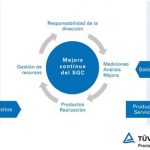
CIBER | October 14, 2021 CIBER, the main partner of NANBIOSIS obtained, last month, the ISO 9001: 2015 accreditation, issued by the ENAC (National Accreditation Entity) through TÜV Rheinland Ibérica Inspection, Certification and Testing SA, by which the quality in the CIBER management system is certified. The scope of the quality management system defined in the certificate covers: “Staff and training management services, administrative accounting and communication management services for the Center for Biomedical Research on the Net”. CIBER keeps updated the Quality Management System (QMS) designed to continuously improve the effectiveness and efficiency of performance, through the consideration of t[...]
18 Oct
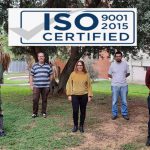
NANBIOSIS U12 “Nanostructured liquid characterization unit” of IQAC-CSIC and CIBER-BBN, led by Dr. Carlos Rodriguez Abreu and D. Jordi Esquena, has implemented a Quality Management System for the scope of Technological service for characterization of colloidal dispersions, which fulfills the requirements of the standard ISO 9001:2015. An IQNet recognized certificate has been issued by AENOR last week. This certification will expand and consolidate the service that Unit 12 of NANBIOSIS is giving to companies and public sector researchers and facilitate their integration in cooperative international projects. The ISO 9001 Standard is the most widespread Quality Management tool worldwide, with over[...]
15 Oct
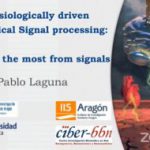
Zaragoza, October 14th, 2021 Bsicos.i3a.es Pablo Laguna, Scientific Director of NANBIOSIS U27 High Performance Computing and researcher of BSICoS Group of I3A-UNIZAR and CIBER-BBN gave a talk about Physiologically driven biomedical signal processing at the Faculty of Physics at the Autonomous University of San Luis Potosí (UASLP) in Mexico. He explaned how biomedical signals convey information about biological systems and can emanate from sources of as varied origins as electrical, mechanical or chemical. In particular, biomedical signals can provide relevant information on the function of the human body. This information, however, may not be apparent in the signal due to measurement noise,[...]
14 Oct
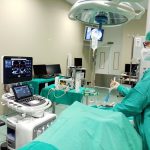
Cáceres, October 14th, 2021 POSITION II has received funding within the Electronic Components and Systems for European Leadership Joint Undertaking (ECSEL JU) in collaboration with the European Union’s H2020 Framework Programme (H2020/2014-2020) and National Authorities, under grant agreement Ecsel-783132-Position-II-2017-IA. It promotes innovation in smart medical instruments and focuses in the next generation of smart catheters and implants by the introduction of open technology platforms for: miniaturization, in-tip AD conversion, wireless communication, MEMS transducer technology and encapsulation. These platforms are open to multiple users and for multiple applications. POSITION II will enable the further development of the European R&D and manufacturing[...]
08 Oct
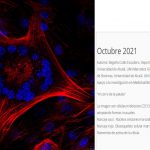
C2C12 myoblast cells differentiating into myotubes and adopting unusual shapes have been obtained and captured by resarchers of UAH and NANBIOSIS Unit 17 Confocal Microscopy Service (of CIBER-BBN and UAH) and and chosen photo of the month by the Spanish Society of Biochemistry and Molecular Biology (SEBBM) The picture illustrates the month of October on the calendar that the SEBBM publishes and distributes annually among all partners, and is part of the gallery of images that illustrate the activities of the SEBBM. Likewise, the photography will participate in the “Best Scientific Image of the Year” contest. The winning image is[...]
06 Oct

Cáceres, 6/10/2021 Today the provider of a Piezoelectric-assisted micromanipulator installs this device in the CCMIJU’s Assisted Reproduction Lab and provides of specific training for its use. The acquisition of the micromanipulator is part of the project “Embryonic Genetics in Assisted Reproduction” (GENERA), co-funded by the European Regional Development Fund (ERDF) within the framework of Spain’s Plurirregional Operational Program for Singular Scientific and Technical Infrastructures (ICTS) 2014 -2020 and by Consejería de Economía, Ciencia y Agenda Cultural of Junta de Extremadura. The objective of GENERA includes the purchase of three devices to expand services in the field of embryonic genetics as[...]
04 Oct
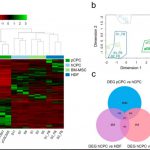
Researchers of NANBIOSIS units U14 Cell Therapy unit, U21 Experimental operating rooms and U24Medical Imaging at JUMISC are coauthors of an article recently published by the journal Cells “Intracoronary Delivery of Porcine Cardiac Progenitor Cells Overexpressing IGF-1 and HGF in a Pig Model of Sub-Acute Myocardial Infarction“· Large animal studies have been carried out by the ICTS ‘NANBIOSIS’, specifically Units 14, 21, 22, and 24 of the JUMISC Human cardiac progenitor cells (hCPC) are considered a good candidate in cell therapy for ischemic heart disease, demonstrating capacity to improve functional recovery after myocardial infarction (MI), both in small and larg[...]
30 Sep
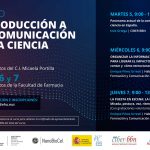
We want to invite you to a practical and short course of Introduction to Scientific Communication organized by CIBER-BBN and NanoBioCellGroup – NANBIOSIS U10 Drug Formulation Unit. The course will take place on the 5th (two hours from 9:00 am to 11:00 am) 6 and October 7 (4 hours from 9:00 a.m. to 1:00 p.m.) .- The covid-19 pandemic has revealed the immense need to bring the world of science closer to citizens, so we are going to work on this soft skill through this course. We have invited Inés Ortega, scientific communicator of the CIBER BBN, who will talk[...]
29 Sep
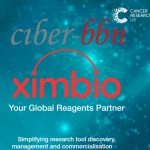
CIBER-BBN, partner of NANBIOSIS, has started a new partnership with Ximbio, part of Cancer Research UK, the largest independent funder of cancer research in the world, to facilitate the commercialisation of life science research tools. This new partnership with Ximbio will help CIBER-BBN groups to develop as bussiness the research tools from their labs and units of NANBIOSIS into commercial products, making them easily available for industry and other academics (including those not under patent protection), from sourcing and production, to sales, licensing and responding to enquiries about your reagents. On October 1st, 2021 – 11:00 – 12:30 CEST , with take place the on[...]
24 Sep

Cristina Pérez, has been the winner of the Young Researcher Award (YIA) at the STAFF congress held in Sirolo (Italy), from Septembre 1 to 4, for her work entitled “Characterization of impaired ventricular repolarization by quantification of QT delay after heart rate changes in stress test” Cristina Pérez is a researcher from BSICoS. Research Group that coordinates NANBIOSIS ICTS Unit 27 “High Performance Computing”, led by PAblo Laguna (from I3A-UNIZAR and CIBER-BBN) Further information at BSICoS Websit[...]
24 Sep

Researchers from BSICoS Research Group – NANBIOSIS U27 (from I3A-UNIZAR and CIBER-BBN presented their works in the Computing in Cardiology (CinC) Conference, held in Brno (Czech Republic) on 12-15 September. Diego García was Young Researcher Award (YIA) finalist with the work “Ventilatory Thresholds Estimation Based on ECG-derived Respiratory Rate”. The purpose of this work is to study the feasibility of estimating the first and second ventilatory thresholds (VT1 and VT2, respectively) by using electrocardiogram (ECG)-derived respiratory rate during exercise testing. The computation was performed by the ICTS NANBIOSIS, specifically by the High Performance Computing Unit of the CIBER-BBN at the I3A-University of[...]
23 Sep

Researchers of Nb4D group – Unit 2 of the ICTS NANBIOSIS (led by Pilar Marco, from CIBER-BBN and the IQAC-CSIC) have participated in Expoquimia 2021, the International Chemistry Meeting, which took place from 14 to September 17 at the Fira de Barcelona.The researchers presented their work in several projects: the FoodSmartPhone project (MSCA-ITN-720325 action), the QS4CF (RTI2018-096278-B-C21), the QS-Motion (TV32018-201825-30-31) and on the PoC4CoV project (PIE-202050E090; PTI Salud Global, CSIC). Research at the FoodSmartPhone(MSCA-ITN-720325 action) is focus on developing devices for the monitoring of contaminants of interest in food safety through the use of mobile phones. The production of t[...]
20 Sep
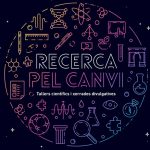
The European Researchers’s Nigth is a public event dedicated to the dissemination of science that is held every year in more than 300 cities in 30 countries of Europe at the same time, organized on the last Friday and Saturday of September. This year face-to-face activities are progrmmed in different locations of Catalonian cities and also the “Nit de la Recerca” YouTube channel offers more than 20 noves microxerrades led by researchers from Catalonia. Two NANBIOSIS’ researchers have joined this event to explain their research: Julian Guercetti – Nb4D Group – NANBIOSIS U2 CAbS, from IQAC-CSIC and CIBER-BBN, will giv[...]
15 Sep
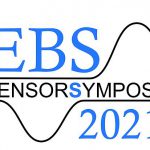
Pilar Marco, the Scientific Director of NANBIOSIS U2 , Custom Antibody Service (CAbS), and leader of the group Nanobiotechnology for Diagnostics (Nb4D) from CIBER-BBN and IQAC-CSIC, coorganises the European Biosensor Symposium digital seminar series. The aim of these seminar series is to continue with the purpose of the European Biosensor Symposium, held in March 2021, to allow especially juior reseachers to present their research, exchange ideas and built networds. The seminars are scheduled on the third Tuesday of every month at 18:00 CET, via zoom. Each of the seminars is organized by a host focussing on a specific topic: “Interferometric sensors“, hosted[...]
11 Sep

Cáceres, September 10th, 2021 In the framework of the project “Updating the Infrastructures and implementation of a LIMS document control and management system to enhance the capacities of the Distributed ICTS NANBIOSIS Units managed by the CCMIJU (AILIMS-NANBIOSIS) a filtered air shower for Animal Housing has been bought with strictly controlled environmental parameters, to prevent possible cross-contamination and the entry of pathogens and viral particles, since during entry and exit of personnel to this area, contamination by the mentioned particles has been detected, so the air shower is an effective solution to eliminate them and protect the controlled environment. AILIMS[...]